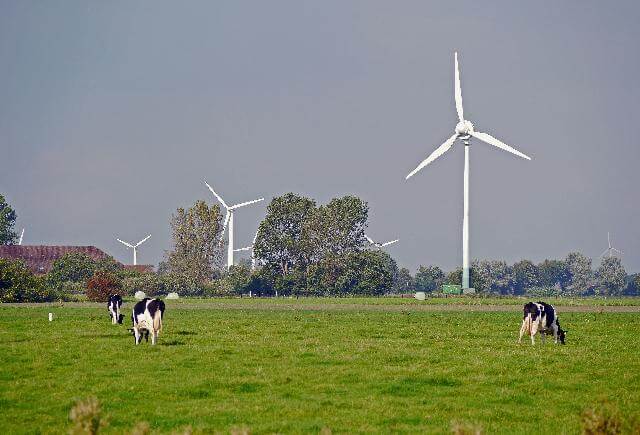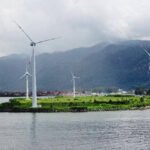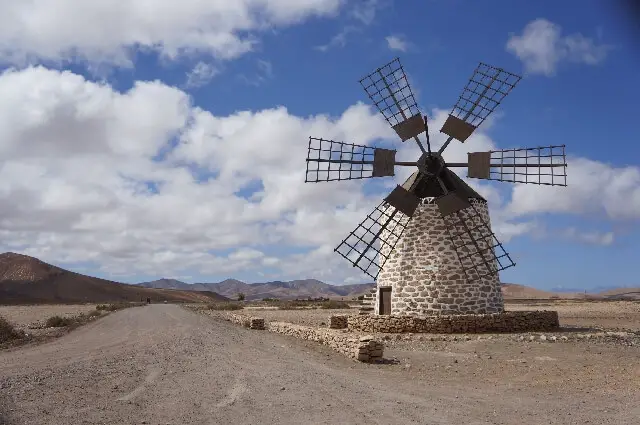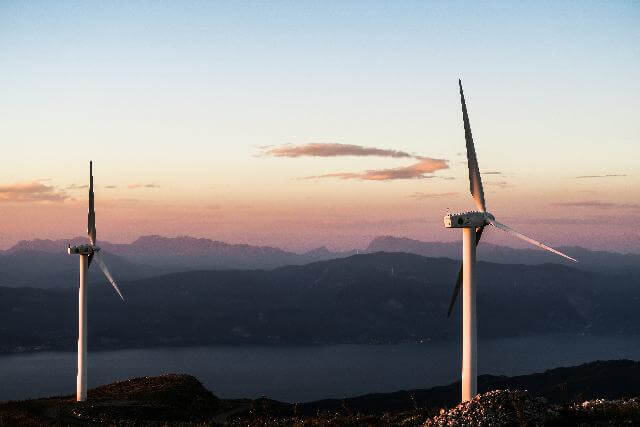Wind turbines generate a lot of mixed feelings (as well as electricity), but how do the people who own the land or work the land around them feel?
Farms are big open pieces of land that grow food or cattle (we know this), and building wind turbines on this land is a sort of ‘double cropping’ because two energies are being produced on one plot (electricity and food).
Wind turbines only use a fraction of the land, and wind power plants can add a second paycheque to farmers or landowners.
Why are there mixed feelings?
Why do farmers not like wind turbines?
Some criticism of wind turbines comes down to aesthetics.
Some people believe their noisy eyesores could possibly lower the value of a property.
There’s also some bad publicity around wind turbines, and many residents near wind turbines have claimed there’s an audible noise from the turbines that causes them headaches, ear pressure and sleep problems.
Wind turbines could also cause a negative effect on agriculture.
To farmers, this could be detrimental.
The wind turbines spin the air around the farm, mostly they bring warmer air down to the surface of the ground.
If a farmer had a temperature-sensitive crop, this could throw off balance and affect their harvest.
During the day, a crop absorbs carbon dioxide and solar energy (sun and wind).
At night, the plants usually take a ‘break’ from absorbing solar energy, but the constant spinning of the turbines prevents this rest period.
Wind turbines bring higher temperatures at night when they’re still spinning warm air around the land.
How do wind power plants encourage landowners to take the risk?
How much do wind turbines pay landowners?
According to some lease agreements, wind power plants pay
– from $4,000 to $8,000 per turbine,
– or $3,000 to $4,000 per megawatt of capacity,
– or 2-4% of gross revenues.
These leases are usually in yearly payments as percentages of the wind plants’ gross revenues.
If there are larger turbines on the land, even larger payments could be made.
Wind turbines could provide farmers with a stable and fixed income that can help offset bad harvests on a farm.
Crops yield differing harvests, but if a farmer has consistent winds, they can ensure there’s always some form of income from their land.
Wind power plants may not even require long rows and columns of turbines on a property, and a farmer could only have 2 active turbines – which means they wouldn’t be the eye-sore many imagine either.
What’s more, wind turbines are passive income because a landowner doesn’t have to service or ‘work’ the wind turbine themselves.
To a farmer who is used to long seasons of laboring their fields… It’s something out of a fantasy to think someone could earn a steady salary doing nothing!
There’s also a more selfless reason to appreciate wind turbines.
The government has poured grants and subsidies into renewable energy, so wind projects also have property tax perks.
This taxon property helps provide money for local schools, fire departments, law enforcement, and more.
Wind turbines are good for the pocket and society. Could there be any other reasons to like them?
Why do farmers like wind turbines?
There are benefits wind turbines have on land that have to do with physics and nature.
As the turbines spin, they bring warmer air down to mix with cool air near the surface.
Throughout the wind farm, the surface is a little warmer than usual (if you don’t have temperature-sensitive crops) there’s a dew formation that can be beneficial.
Dew formation can be a pleasant irrigation perk to the wind plant lease.
Another benefit is air-pressure fluctuation around wind turbines.
There is a lot of carbon dioxide in the top few feet of soil — as much as two or three times what is in the air.
When there are wind turbines nearby, they help pump air down.
This ‘downwind’ pressure causes movement and brings the carbon dioxide out of the soil, so more is available to the plant for photosynthesis.
So, the air pressure changes the turbines cause essentially to pump the carbon dioxide out of the soil.
The crops and plants then are fed extra carbon dioxide from the soil (below) and not just from the moving air (above).
The air moving downward also creates more plant movement, which increases sunlight penetrating the thick crop canopy.
Therefore, can you farm around a wind turbine? Absolutely there are so many benefits that could come from building a turbine on one’s land.
There are risks for some crops, but the stable income, cleaner energy production, and overall benefits of wind turbines are worth some risk, right?






